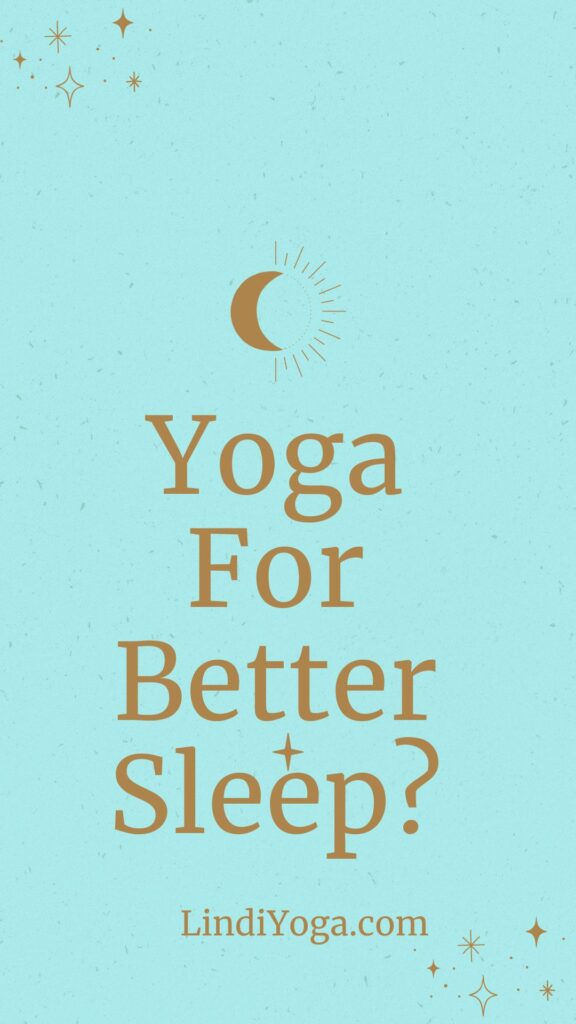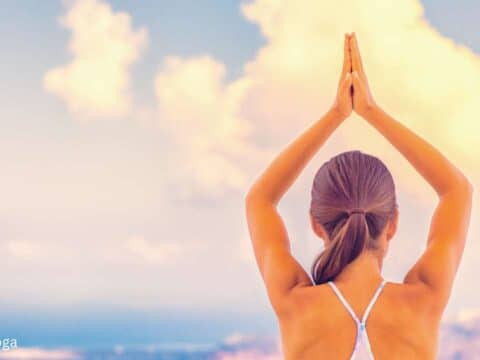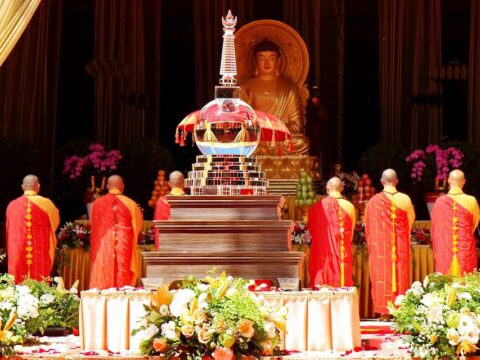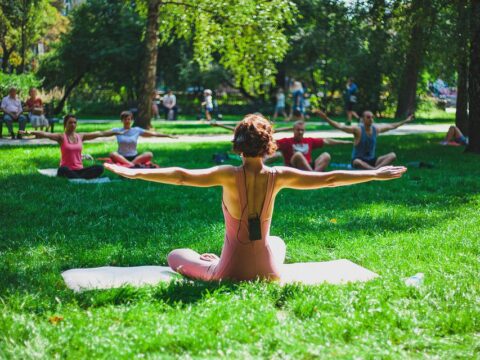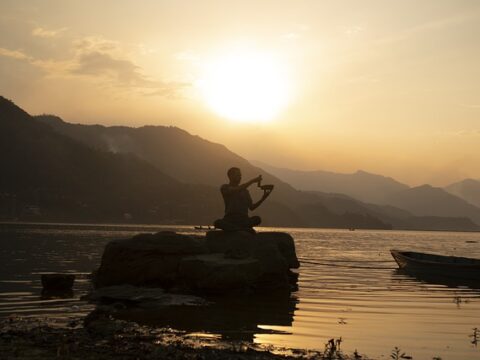Yoga for good sleep? What happens when you don’t get enough sleep? Well, the results are not pretty. Your mind and body can become very sluggish if you don’t get enough sleep.
Although yoga is a great way to keep in shape and improve your overall health, it also has many benefits when it comes to getting a good night’s sleep.
The science behind yoga has been researched and proven to have great benefits for our bodies and minds. But how does it affect our sleep patterns? Does it actually help us sleep better?
Podcast
Benefits of yoga for a good night’s sleep
Yoga improves the quality of sleep
Yoga is known for its effect on the human body, and we can see this in the postures and meditation. It helps in reducing stress, improves our breathing and makes us feel relaxed and calm.
It also has a calming effect on the brain, which helps regulate our emotions and feelings. When we practice yoga, the muscles relax, which helps the body feel more comfortable, especially during sleep. This leads to improved quality of sleep.
Yoga helps improve blood flow
It is believed that blood circulation improves when we practice yoga. The muscles that were previously tight and tense relax, resulting in increased blood flow.
This increased blood flow leads to improved oxygen levels, which in turn leads to improved sleep.
Yoga improves the immune system
Yoga is known to benefit our physical, mental and emotional health. One of the most important aspects of our physical health is our immune system.
When we practice yoga, it helps to improve the immunity of our body. It is also said that people who practice yoga are less likely to have a cold. People who don’t have colds sleep better. Right?
Yoga improves metabolism
According to a 2011 study, yoga can actually boost metabolism. According to the study, yoga was found to increase metabolic rate by an average of 16% with just 10 minutes of exercise.
In the same study, participants who practiced yoga had lower levels of cortisol in their bodies, which helped to lower the stress hormone.
Yoga reduces anxiety
People who practice yoga are less anxious. This is because yoga improves our mental health, which in turn helps reduce anxiety.
Yoga improves flexibility
When you practice yoga for a long period of time, your flexibility increases. In yoga, we do various stretching exercises to improve the flexibility of our body.
These stretching exercises promote overall strength and flexibility. Stretching improves our blood circulation, which in turn leads to better sleep.
Yoga helps relieve pain
Our muscles are stretched during yoga, which makes them strong and flexible. This helps us perform better in sports, daily activities and also at work.
Yoga improves posture
Our posture is very important for our body, especially when it comes to sleeping. Posture is an important aspect of yoga because it improves our balance.
When our body is straight and upright, our body functions better, which leads to a good night’s sleep.
And the sum of it all leads to improved sleep as well.
Yoga poses before sleep
Lizard pose
Lizard pose is a challenging pose, but it can help you fall asleep quickly. It stimulates deep breathing and helps the body to open the hips and chest. It also strengthens the centre of the body.
Beginners should pause during the pose to check their breathing and concentrate on the movement. After the lizard, it is recommended to practise Utthan Pristhasana, a yoga pose that promotes deep relaxation.
A variation of downward facing dog, the lizard posture pose opens the shoulders, neck and back and prepares the body for deeper, hip-opening poses. To perform the lizard, start in the downward facing dog position with the left foot forward and rest the elbows on a small block. Take ten to fifteen deep breaths.
The lizard pose can help open the hips and improve flexibility. This medium asana stimulates the sacral chakra, which governs our family identity and interpersonal relationships. If you have difficulty with this pose, you can modify it to make it easier. Be sure to breathe deeply to find balance and avoid injury.
Locust pose
Locust pose is one of the most beneficial yoga poses for sleep. This pose allows you to stretch and lengthen your entire body. To perform it, you must first stretch your legs straight out in front of you with the soles of your feet touching the floor. Then slowly lift your legs, guiding your buttocks, inner thighs and tailbone. Then take five deep breaths.
The grasshopper pose stretches the back and shoulders. It also strengthens the legs and back. In addition, it increases the flexibility of the spine. It should be done in the dark when you are most tired. You can hold the pose for 2-5 minutes. Make sure you breathe slowly and do not let your leg sink down.
The grasshopper pose is a simple, easy yoga pose that is great for the evening before bed. It is the perfect pose for the bedroom. It helps to relax the body and make it easier to fall asleep. It is best to practice this pose before going to bed, as it will help you sleep better.
Standing forward bend
Standing forward bends are great for promoting relaxation and helping you fall asleep. They are also a great way to stretch the back and help the digestive system. To get the most benefit from this yoga pose for sleep, start a few hours before bedtime. This exercise can set the tone for the rest of the evening. When you are finished, write down how you felt during the exercise.
It is very comfortable and can be done in any room, including the bedroom. Just make sure you have enough space to do the poses effectively. Close your eyes and breathe deeply. You can stay in this pose for between 5 minutes and an hour.
Apart from the physical benefits, standing forward bends are great for promoting relaxation. They allow you to tune into your breathing, stretch your muscles and find relaxation.
Head on Knee Pose
The head on knee pose is a yoga pose for sleep that is best performed before bed. This forward bend yoga pose strengthens your arms, legs and back and aids digestion. It also improves blood circulation and promotes deeper sleep. If you don’t have the flexibility to perform the head-forward-bend pose, you can use a yoga block or folded blanket instead.
To perform the head-down pose, first sit on the floor. Bend your knees slightly so that you are sitting down with your right knee resting against the inside of your left thigh. If you have difficulty bending your knees, you can place a pillow under the knee for support.
Practising a yoga pose before bed can relieve stress, stretch and signal to your body that it is time to sleep. You should practice yoga in comfortable clothing and turn off your electronic devices to make the experience as calming as possible.
Closed angle pose while lying down
If you are looking for a yoga pose that will help you sleep, the closed angle lying pose is a good choice. This passive stretch helps the groin and hips to relax and release tension. It is helpful for people suffering from stress, insomnia and mild depression. It is also suitable for pregnant women as it opens up the pelvic area. Just make sure that you lie on your back for this pose.
The relaxation that comes from this posture is an important factor for better sleep. This posture looks like nothing, but it is actually a form of meditation that helps you to relax more. It not only promotes better sleep, but also relieves depression and anxiety. Since insomnia is associated with high blood pressure, this pose can help lower your blood pressure.
How to perform the three-part breath
Performing the three-part breathing technique can help you fall asleep at night. This technique promotes diaphragmatic breathing, which is important for good health. The process also helps you calm your mind and body. In addition, three-part breathing can be helpful in reducing stress as it promotes the relaxation response.
The first step to performing this pose is to sit cross-legged on the floor or a chair.
The aim is to make your body as relaxed as possible. This includes breathing deeply and slowly through your nose. Once you feel comfortable in this position, exhale and flex your spine. Hold this position for a few seconds. Relaxing in this position will calm you and promote restful sleep.
Reclining Hero
The lying hero yoga pose is the perfect way to relax your body and sleep. In this pose you place your arms, hands and tailbone in a reclined position.
You can practice the pose on the floor or on a blanket to support your spine. Hold the pose for 30 seconds to one minute. Advanced students can practice this pose for five minutes, but it is important that you learn under the supervision of a certified yoga instructor.
Some people find this pose helpful in treating insomnia, respiratory disorders and infertility. It also promotes the flow of prana into the blood, which helps to balance the nervous system and promote restful sleep.
Child’s posture
If you want to relax before bed, try the child’s pose. Child’s pose is particularly conducive to sleep as it stimulates the parasympathetic nervous system. Child’s pose is a simple yoga pose that promotes calmness, serenity and a sense of security. It is very relaxing and can be practised before bedtime with little or no equipment.
Baby Pose is particularly useful for developing awareness of breathing. It is important to breathe deeply around the ribs in this pose, which helps to lower your heart rate and regain control of your breath. It also gently stretches the spine, hips and thighs. It is very relaxing and many people find it comfortable to practice this pose in bed.
Sphinx pose
Sphinx pose is a great yoga pose for sleeping at night as it stretches the pelvic bones and lower back. The pose is also known to relieve tiredness and fatigue. The sphinx is one of the gentler backbends. The lift of the lower abdomen is subtle, while the lift of the upper abdomen is more pronounced.
Make sure your abdominal muscles are tight when you perform the pose. You should also press your chest into the floor to improve blood pressure and relieve stress. The sphinx is one of the most relaxing poses you can do before bed. For best results, hold the pose for at least 30 seconds.
Yoga poses for sleep can help with anxiety and depression. They also relax the nervous system. People who suffer from insomnia cannot fall asleep properly due to stressful events in their lives.
Cat and Cow Pose
This yoga pose is a great way to relax and loosen the lower back while stretching the entire spine. It is recommended for people who have difficulty falling asleep due to stiffness. When going through the poses, make sure your breathing and movement are synchronised.
If you have back or neck injuries, it is best to consult a doctor before starting this yoga pose. The movement of the neck is crucial, so don’t overstretch it or force your head to drop. Your shoulders should also be relaxed and your shoulder blades should be drawn down away from your ears.
The cat and cow pose helps to open all the chakras and align the nervous system. These benefits can be felt throughout the body and the cat and cow pose can be used as an introduction to other yoga postures.
This pose requires the body to be on all fours with the wrists under the shoulders and the knees under the hips. Practising this pose will stretch your back and relax your muscles, making it easier for you to fall asleep.
Knees to chest
Knees to chest is a challenging pose, but it can help you sleep well. While it can help you relax and fall asleep, it can also put strain on your neck. Therefore, be sure to consult a yoga teacher before assuming this pose.
This yoga pose is often accompanied by other postures to help your body rest. Its most famous benefit is its ability to relax the body and promote restful sleep. Knees to chest are not only a great way to relax and fall asleep, but can also improve your coordination.
Knees to chest is also a very common yoga pose for insomnia. It helps you relax your entire body and mind and relieve anxiety. It also helps to improve blood circulation in the legs.
Happy baby
If you are looking for a yoga pose to help you fall asleep, Happy Baby might be the right choice. Happy Baby, also called Ananda Balasana, is an important hip opener and is particularly helpful for decompressing the SI joint. This pose requires a little practice.
To begin, stretch your legs wide and bring your knees outside your arms. Make sure your elbows are on the inside of your thighs, but not so far that they pinch your neck. If you have difficulty staying in this position, try using a yoga belt. You can also roll from side to side and back and forth.
Corpse pose
If you are tired, a simple resting position like corpse pose is a good choice. It is a simple but powerful relaxation pose that you can do on the floor. For extra support, place a yoga mat under your body. You can also place a towel under your lower back to support the lumbar spine. Be aware of a slight discomfort while you are in the corpse position. This is an essential part of the relaxation process.
Some yoga postures, like the corpse pose, help you fall asleep by relieving tension and stress. Be sure to breathe deeply while holding the pose. You can also use a cushion to support your legs.
The corpse pose is an excellent relaxation pose for people with hip and lower back injuries. It can also help you fall asleep faster. If you practice yoga regularly, you may fall asleep much faster. Regular yoga has even been shown to help people who suffer from insomnia.
Conclusion
Yoga has been shown to be an effective remedy for insomnia. When you perform it before bed, it relaxes the body and calms the mind, signalling your body to fall asleep.
It can also help regulate the release of sleep-inducing hormones and chemicals like adenosine. Yoga has been shown to reduce the stress hormone cortisol and increase the neurotransmitter GABA, which is a natural sedative.
Practice these poses regularly and you will notice an improvement in your sleep. Make sure you are using the correct breathing techniques.
In addition to yoga for sleep, a healthy diet, high levels of exercise and less exposure to technological devices are also important factors for restful sleep. A good yoga practice will ensure a restful, deep sleep. Try one of these simple but effective poses tonight! You’ll be glad you did!
